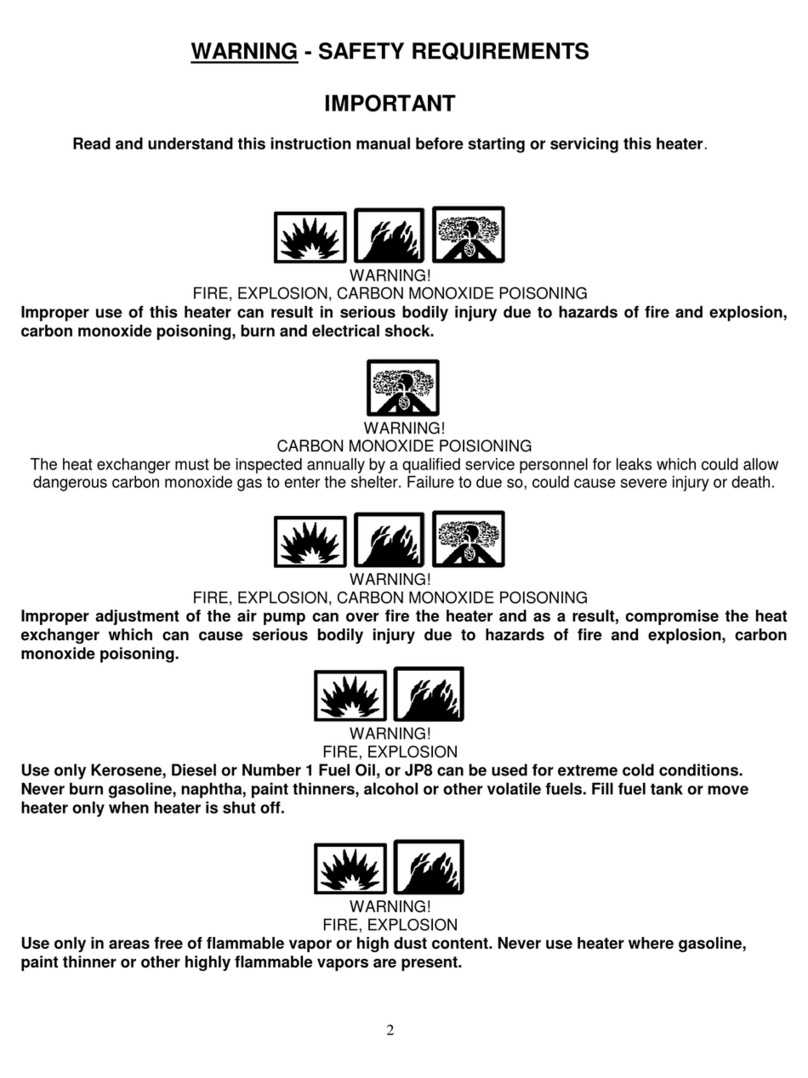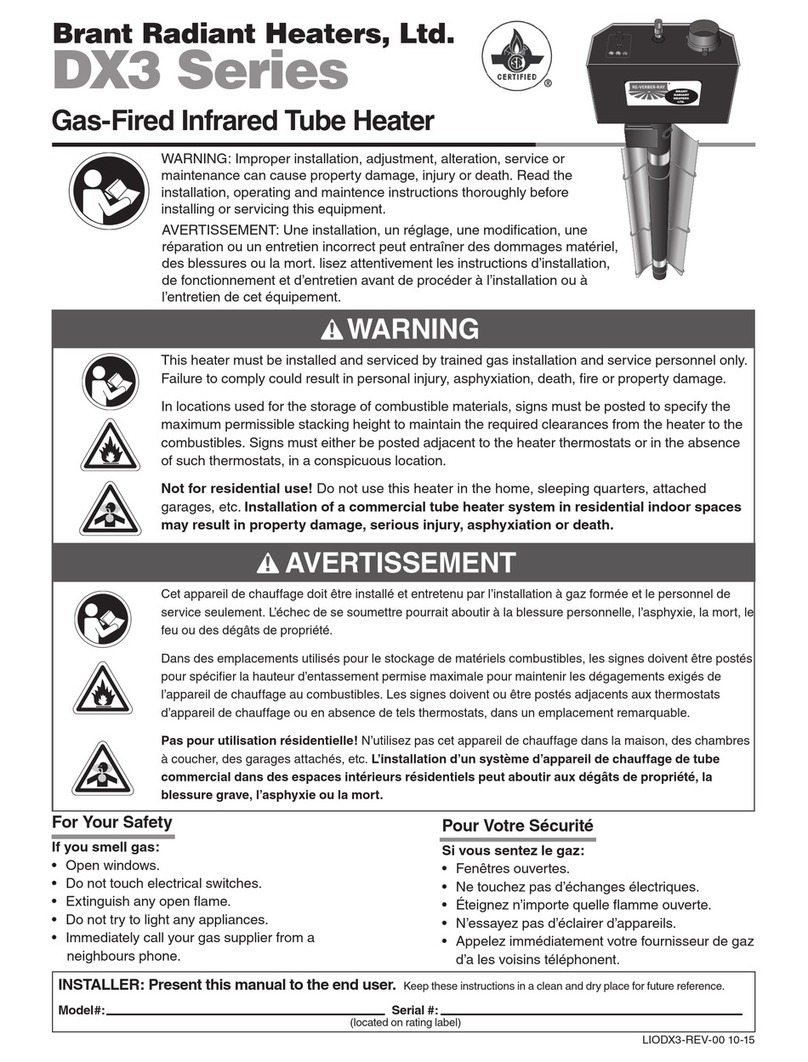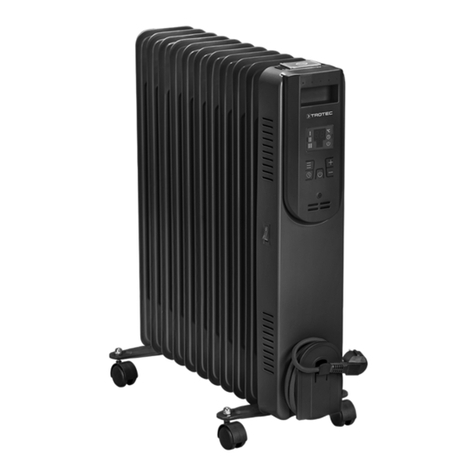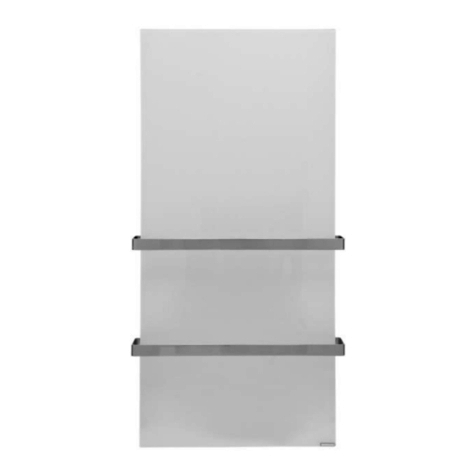HDT MV60-EU Series User manual

`
MV60-EU Series Heaters, 220 VAC, 50-60 Hz
SHELTER HEATER
60,000 BTU Multi-fuel Shelter Heater
Operation and Maintenance Manual
HDT –Tactical Systems Business Unit
30525 Aurora Rd
Solon, Ohio 44139-2795
Tech Support: (800) 684-6111
www.hdtglobal.com
MANUAL PART NUMBER: 53858
REVISION 3 –26APRIL2011

THIS PAGE INTENTIONALLY LEFT BLANK

Operation and Maintenance Manual
3
Warning Summary
IMPORTANT
Be sure to read and understand this operation and maintenance manual before starting or servicing this
heater.
WARNING!
FIRE, EXPLOSION, CARBON MONOXIDE POISONING
Improper use of this heater can result in serious bodily injury due to hazards of fire and explosion, carbon
monoxide poisoning, burn and electrical shock. Do not adjust the pump pressure higher then the
recommended amount. Failure to do so can result in higher then normal heat exchanger temperatures,
which can cause the heat exchanger to fail allowing dangerous Carbon Monoxide gas to enter the shelter.
Failure to follow these instructions could cause serious injury or death.
WARNING!
FIRE, EXPLOSION
Use only Kerosene, Diesel or Number 1 Fuel Oil, or JP8 can be used for extreme cold conditions. Never
burn gasoline, naphtha, paint thinners, alcohol or other volatile fuels. Fill fuel tank or move heater only
when heater is shut off.
WARNING!
FIRE, EXPLOSION
Use only in areas free of flammable vapor or high dust content. Never use heater where gasoline, paint
thinner or other highly flammable vapors are present.
WARNING!
EXPLOSION
Fully drain and ventilate fuel tank before transporting.

Operation and Maintenance Manual
4
WARNING!
ROTATING MACHINERY
When used with thermostat, heater may start at any time. Do not open access door while heater is
running or plugged in. Remove all power prior to service.
WARNING!
SHOCK HAZARD
Use only with electrical voltage and frequency specified on model plate. Do not perform any service with
heater plugged in.
WARNING!
HIGH VOLTAGE
The ignition transformer develops 10,000 volts. Serious injury or death may occur if personnel come in
contact with high voltage lead.
WARNING!
FIRE, EXPLOSION
Do not operate heater without output duct, P/N CAH-1015, properly installed. Ensure hot air outlet is at
least 1.5 meters from combustible materials. Ensure ducts (outlet and inlet) are free from obstructions and
sharp bends. ALWAYS REMOVE STORAGE PLUG CAH-126-1 BEFORE OPERATING HEATER.
WARNING!
HOT SURFACES
Parts of the heater become very hot when operating and immediately after operating. The exhaust can
reach temperatures in excess of 1000 degrees Fahrenheit. Severe burns may occur if the heater is not
allowed to cool down properly before servicing.

Operation and Maintenance Manual
5
WARNING!
CARBON MONOXIDE POISONING
The heat exchanger must be inspected annually by qualified service personnel for leaks which could
allow dangerous carbon monoxide gas to enter the shelter. Failure to due so, could cause severe
injury or death.

Operation and Maintenance Manual
6
Table of Contents
Operation and Maintenance Manual.............................................................................................................1
1. System Overview, Description and Principles of Operation...............................................................10
1.1 System Overview..........................................................................................................................10
1.2 Description of Major Components................................................................................................11
1.3 Controls and Indicators.................................................................................................................14
1.4 WARNING Labels and Data Plates..............................................................................................16
1.5 CAMFIRE Heater Specifications ..................................................................................................19
1.6 Principles of Operation .................................................................................................................20
2. Setup and Operation of the CAMFIRE Heater.................................................................................25
2.1 Preparing the Heater for Operation ..............................................................................................25
2.1.1 Unpacking..............................................................................................................................25
2.1.2 Installing the Exhaust Stack Extension .................................................................................25
2.1.3 Removing the Accessories....................................................................................................26
2.2 Siting Considerations....................................................................................................................26
2.3Setup ............................................................................................................................................27
2.3.1 Attaching the Flexible Ducts..................................................................................................27
2.4 Before Operation Preventative Maintenance Checks and Services (PMCS)...............................30
2.5 Fueling..........................................................................................................................................30
2.5.1 Fueling the Internal Tank (MV60S-EU, MV60T-EU).............................................................30
2.5.2 Connecting and operating the Remote Room Thermostat ...................................................31
2.5.3 Connecting the Power Cable.................................................................................................32
2.6 Final Checks Before Operation ....................................................................................................33
2.7 Starting and Operating the Heater................................................................................................33
2.7.1 Starting the Heater ................................................................................................................33
2.8 Refueling During Operation..........................................................................................................34
2.9 Shutting Down the Heater ............................................................................................................34
2.10 Preparing for Movement or Storage..........................................................................................34
2.10.1 Preparing for Movement........................................................................................................34
2.10.2 Preparing the Heater for Storage..........................................................................................35
3. CAMFIRE Troubleshooting..................................................................................................................38
3.1 Introduction...................................................................................................................................38
3.2 Operator Level Troubleshooting...................................................................................................38
3.3 Safety Control Operation and Diagnostics ...................................................................................38
3.3.1 Operator Level Malfunction Symptom Index.........................................................................39
3.3.2 Examining the Heater............................................................................................................39
3.3.3 Test Firing the Heater............................................................................................................40
3.3.4 Operator Level Troubleshooting Procedures ........................................................................40
3.4 Maintainer Level Troubleshooting ................................................................................................45
3.4.1 Test Firing..............................................................................................................................45
3.4.2 Maintainer Level Safety Control Operation and Diagnostics ................................................45
3.4.3 Maintainer Level Malfunction Symptom Index ......................................................................46
3.4.4 Maintainer Level Troubleshooting Procedures......................................................................47
4. CAMFIRE Maintenance.......................................................................................................................54
4.1 Introduction...................................................................................................................................54
4.2 Preventive Maintenance Checks and Services............................................................................54
4.2.1 Introduction............................................................................................................................54
4.2.2 Removing Upper Shell ..........................................................................................................56
4.2.3 Preventive Maintenance Checks and Services.....................................................................57
4.3 Special Tools, Equipment and Supplies.......................................................................................61

Operation and Maintenance Manual
7
4.4 System Maintenance Procedures.................................................................................................61
4.4.1 General..................................................................................................................................61
4.4.2 Remote Room Thermostat (Inspect/Test).............................................................................62
4.4.3 Ignition Transformer (Inspect/Test).......................................................................................63
4.4.4 Checking Motor Starting Circuits (Test) ................................................................................65
4.4.5 Fan Service ...........................................................................................................................67
4.4.6 Sediment strainer Service .....................................................................................................68
4.4.7 Burner Head Service (Clean)................................................................................................69
4.4.8 Air Pump Repair (Inspect, Test, Repair) ...............................................................................73
4.4.9 Safety Control Circuit Testing (Test, Clean)..........................................................................81
4.4.10 Photocell (Test) .....................................................................................................................85
5. Illustrated Parts Listing.........................................................................................................................88
6. Schematics and Wiring Diagrams......................................................................................................106
7. Alphabetical Index..............................................................................................................................108

Operation and Maintenance Manual
8
Table of Figures
Figure 1-1. CAMFIRE Control Panel...........................................................................................................14
Figure 1-2. Remote Room Thermostat.......................................................................................................15
Figure 1-3. System Operational Diagram (simplified for clarity) .................................................................21
Figure 4-1. Camfire Maintenance Locations...............................................................................................56
Figure 4-2. Wiring Diagram.........................................................................................................................66
Figure 4-3. Location of Fan on Shaft ..........................................................................................................67
Figure 4-4. Checking clearance of air pump rotor.......................................................................................78
Figure 5-1. MV60-EU Labels and Accessories...........................................................................................88
Figure 5-2. MV60-EU FULL ASSEMBLY....................................................................................................90
Figure 5-3. COMBUSTION CHAMBER ASSEMBLY..................................................................................92
Figure 5-4. BURNER HEAD ASSEMBLY 53649........................................................................................94
Figure 5-5. MV60 CONTROL BOX-FUEL BRACKET ASSEMBLY............................................................96
Figure 5-6B. CONTROL BOX ASSEMBLY.................................................................................................98
Figure 5-7. MOTOR/PUMP/BRACKET ASSEMBLY (53745)...................................................................100
Figure 5-8. MOTOR AND PUMP ASSEMBLY(53485) .............................................................................102
Figure 6-1. Camfire Heater Wiring Diagram .............................................................................................106
Figure 6-2. Camfire (MV60) Fuel Schematic ............................................................................................107
Table of Tables
Table 1-1. CAMFIRE Heater Warning Labels and Data Plates.................................................................16
Table 1-2. Camfire Heater Specifications...................................................................................................19
Table 2-1. Flexible Duct Usage vs. Outside Temperature..........................................................................27
Table 2-2. Extension Cord Size Requirements...........................................................................................32
Table 3-1. Operator Level Malfunction Symptom Index .............................................................................39
Table 3-2. Operator Level Troubleshooting Procedure ..............................................................................40
Table 3-3. Maintainer Level Malfunction Symptom Index...........................................................................46
Table 3-4. Maintainer Level Troubleshooting Procedures..........................................................................47
Table 4-1. Camfire Heater Preventive Maintenance Checks and Services................................................57
Table 5-1. MV60 Labels and Accessories ..................................................................................................89
Table 5-2. Combustion Chamber Assembly...............................................................................................93
Table 5-3. Burner Head Assembly 53649...................................................................................................95
Table 5-4. Control Box-Fuel Bracket Assembly..........................................................................................97
Table 5-5. Control Box Assembly ...............................................................................................................99
Table 5-6. Motor/Pump/Bracket Assembly ...............................................................................................101
Table 5-7. Motor and Pump Assembly P/N 53485....................................................................................103

Operation and Maintenance Manual
9
Chapter 1
System Overview,
Description and
Principles of Operation

Operation and Maintenance Manual
10
1. System Overview, Description and
Principles of Operation
1.1 System Overview
The CAMFIRE Heaters are portable, clean-air space heaters that rely on an external input of 220 VAC,
50/60 Hz, single phase power.
The heart of the heater is a heat exchanger that is supplied with air from a fan driven by a 1/4 horsepower
motor. Part of the air from the fan enters the combustion chamber where it mixes with the atomized fuel to
become a combustible mixture. The exhaust gases circulate within the heat exchanger; warming its inner
surfaces, then escape from the heater through a flue pipe adapted to the top of the heater.
The remaining air from the fan passes over and around the combustion chamber and through the heat
exchanger where it is heated, and emerges from the heater as a powerful stream of heated clean air.
The heater is provided with duct connectors at the outlet and inlet ends, allowing use either in a 100%
fresh air mode or 100% recirculation air mode.
The fuel system consists of an air pump mounted on one end of the motor shaft that forces air through
the nozzle. The moving air in the nozzle lifts the fuel from the tank by siphon action and carries it into the
combustion chamber.
Filters protect the fuel system prior to the fuel entering into the spray nozzle. The electrical control system
is protected by a push button type circuit breaker.
A safety control unit, connected to a photoelectric cell, shuts down the heater if a flame is not detected in
the combustion chamber after start up. It also has two diagnostic LEDs to help troubleshoot problems. A
”Duct Over-Heat” switch is installed as a safety measure. In the event that the outlet duct becomes
blocked, the switch will shut the heater down.
A thermostat accessory, which plugs into the electrical system of the heater, may be set to any desired
temperature. When the temperature of the surrounding air reaches the pre-set temperature, the
thermostat contacts open and cause the heater to shut down. When the air cools, the thermostat contacts
close and the heater recycles.
The heater is designed for hard use in rough environments resulting in a minimum of down time for repair
and maintenance. It is protected by roll bars to prevent damage by upset or rollover and shrouded to
protect the working portion of the heater against falling objects.
The heater can be fitted with added accessories such as wheels, skis or toboggan. A spares kit is also
available that includes filters, spark plug, and fuel regulating components.

Operation and Maintenance Manual
11
1.2 Description of Major Components
Control Panel –Contains all operation
controls for heater including power input
connector, optional remote room thermostat
connector, and hour meter.
Exhaust Stack Extension–The exhaust
stack extension is installed in the exhaust
outlet on the top of the heater and acts to
direct the combustion gases away from the
heater.
An internal screen in the exhaust stack
extension acts as a spark arrester.
Inlet and outlet ducts –15 foot flexible
ducts connect to the shelter duct tunnels and
circulate heated and unheated air through the
shelter.

Operation and Maintenance Manual
12
End plug –Installs into the inlet end of the
heater and is used to house accessory items
such as the remote room thermostat.
Burner assembly –The burner assembly is
where all combustion occurs within the
Camfire heater. Atomized fuel is mixed with
air and ignited by the spark plug to create the
heat circulated through the shelter.
Power cable –A 6-foot long AC power cable
that connects the heater with a 220` VAC
power source. The power cable is wrapped
around the inlet duct adapter.

Operation and Maintenance Manual
13
Remote Room Thermostat –Permits
automatic temperature control inside a
shelter. The remote room thermostat hangs
inside the shelter and monitors the shelter
temperature. If the shelter temperature falls
below the set point on the thermostat, the
heater will start and begin supplying heat
until the set point is reached.
Roll bars, handles, and local transport
wheels* –Handles are located at either end
of the heater and permit the heater to easily
be moved into position. Roll bars are located
around the heater and act to protect the
heater from damage. Local transport wheels
(optional accessory) permit the heater to be
rolled into position.
* Local transport wheels are an optional accessory.
Sediment strainer assembly. Allows for
visual inspection of fuel for dirt and water. Is
able to be easily removed and cleaned.

Operation and Maintenance Manual
14
1.3 Controls and Indicators
No.
Control
Description
1
Reset
Resets the heater in the event a problem shuts the heater down or a fault
condition occurs
2
Power ON AUTO/
ON MANUAL
Turns heater power on and selects AUTO or MANUAL heat mode
3
Pilot Light
Indicates that power is supplied to the heater.
4
Thermostat Jack
Permits the connection of the remote thermostat assembly.
5
Hour meter
Displays the total number of operating hours for the heater.
6
Circuit Breaker
Protects the heater against circuit overload
7
View Port
Allows the user to view the diagnostic LEDs, for troubleshooting and repair
Figure 1-1. CAMFIRE Control Panel
1
2
3
4
5
6
7

Operation and Maintenance Manual
15
No.
Control
Description
1
Variable
Temperature
Control
Placed inside the shelter being heated, permits the operator to set the
desired temperature of the shelter.
2
Temperature
Sensing Coil
Located on the top of the remote room thermostat, monitors the temperature
of the shelter.
Figure 1-2. Remote Room Thermostat
1
2

Operation and Maintenance Manual
16
1.4 WARNING Labels and Data Plates
The following section contains a description of all WARNING labels and data plates associated with the
Camfire Heater.
Table 1-1. CAMFIRE Heater Warning Labels and Data Plates
WARNING Label or Data Plate
Location/Description
Located on the side of the heater, the data plate
provides pertinent data including Model Number
and Serial Number
Located on the control panel, identifies the
circuit breaker. See section on controls and
indicators.
Located near the fan compartment, warns user
of electrical shock potential inside fan
compartment.
Located on fan assembly, label identifies part
number and performance specs of fan.

Operation and Maintenance Manual
17
Located on side of heater, label lists the
operating procedures for the heater in
abbreviated form.
Located on the control panel, identifies power
switch.
Located inside heater near air pump, identifies
pressure adjustment screw.
Located inside heater near burner assembly,
identifies pressure gauge.
Located on end plug at end of heater, identifies
the fact that the cap must be removed before
operation. Also informs user of accessories
stored inside end plug.
Located on control panel, identifies Reset
switch.

Operation and Maintenance Manual
18
Located on side of heater, details heater start-
up procedures.
Located on control panel, identifies remote
ROOM THERMOSTAT.
Parts ID tag located on the ignition transformer.
Located on control panel, alerts user that only
220VAC power should be used.
Located near fuel filler cap on side of heater,
warns user against the use of naptha and
identifies all approved fuels.
Located near duct connections at end of heater.
Warns user that only approved flexible ducts
rated for temperatures of 300 degrees F or
higher can be used.
220 VAC

Operation and Maintenance Manual
19
1.5 CAMFIRE Heater Specifications
Table 1-2. Camfire Heater Specifications
MV60S-EU, MV60T-EU,
Input Heat Rating
BTU/Hour
90,000
Output Ratings
Clean-air Output, BTU/Hour
60,000
Volume, CFM (Approximate)
600
Other Ratings
Current, starting
3.5 AMPS
Current, running
2.2 AMPS
Voltage
220 VAC
Frequency
50/60 Cycles
Fan/Pump Motor
1/4 HP
Air Pump Pressure
5.0 PSI
Fuel Nozzle
Meter Size
0.65 GPH
Spray Angle
80 DEGREES
Fuel
Kerosene, DF1, DF2,
Fuel Oil, JP8 Only
Tank Capacity
8.5 GAL
Flexible Ducts (2)
12 inch diameter
15 ft Length
Dimensions (Without Stack
Extension)
W15” L46” H25”
Weight (Without Fuel)
105 LBS

Operation and Maintenance Manual
20
1.6 Principles of Operation
Fuel System
An air pump on one end of the motor shaft forces the air through the nozzle. The moving air lifts fuel from
the tank or from the remote fuel source ( AND version) by a siphon action and carries it into the
combustion chamber in a fine spray.
Air System
The air system is divided into two parts, both are supplied with air from a fan that is attached to the other
end of the motor.
Part of the air from the fan enters the combustion chamber where it mixes with the atomized fuel to
become a combustible mixture, and also mixes with the burning gases to complete the process of
combustion.
The exhaust gases from the combustion chamber circulate within the inner surfaces of the heat
exchanger. They are then ducted out of the heater through the stack adapter on its’ top and out of the
heater space through a flue pipe.
The rest of the air from the fan passes over and around the combustion chamber and through the heat
exchanger where it is heated and emerges from the front of the heater as a powerful stream of heated
fresh air, without being mixed with the products of combustion.
Ignition System
The ignition system consists of a transformer and spark plug. The transformer increases the input voltage
to a very high potential that causes an arc to be drawn between the electrodes of the spark plug. The arc
is used to ignite the fuel and air mixture within the combustion chamber.
Control System
The safety control circuit consists of a duct over heat switch, a light sensitive photocell, and a safety
control. The safety control will trip if the heater fails to ignite or the flame goes out, thereby causing the
heater to shut down. The safety control has two diagnostic LEDs which can be seen through a hole in the
front of the control panel.
The photocell is used to sense the presence of light due to the flame inside the combustion chamber. It
varies its’ electrical resistance in relation to light rays. When under the influence of light, the cell has very
low resistance. The resistance is high when little or no light strikes the light sensitive surface. The flame
sensor’s function is to control the safety control.
A ”duct over-heat” switch is located at the outlet end of the heater. This switch will shut down the heater if
the duct temperature exceeds approximately 275 deg. F.
A thermostat accessory, Part No. CAH-134-1, may be incorporated into the electrical circuit of the heater.
The thermostat can be set to any desired temperature between 35 deg. F and 95 degrees F. When the
This manual suits for next models
2
Table of contents
Other HDT Heater manuals
Popular Heater manuals by other brands
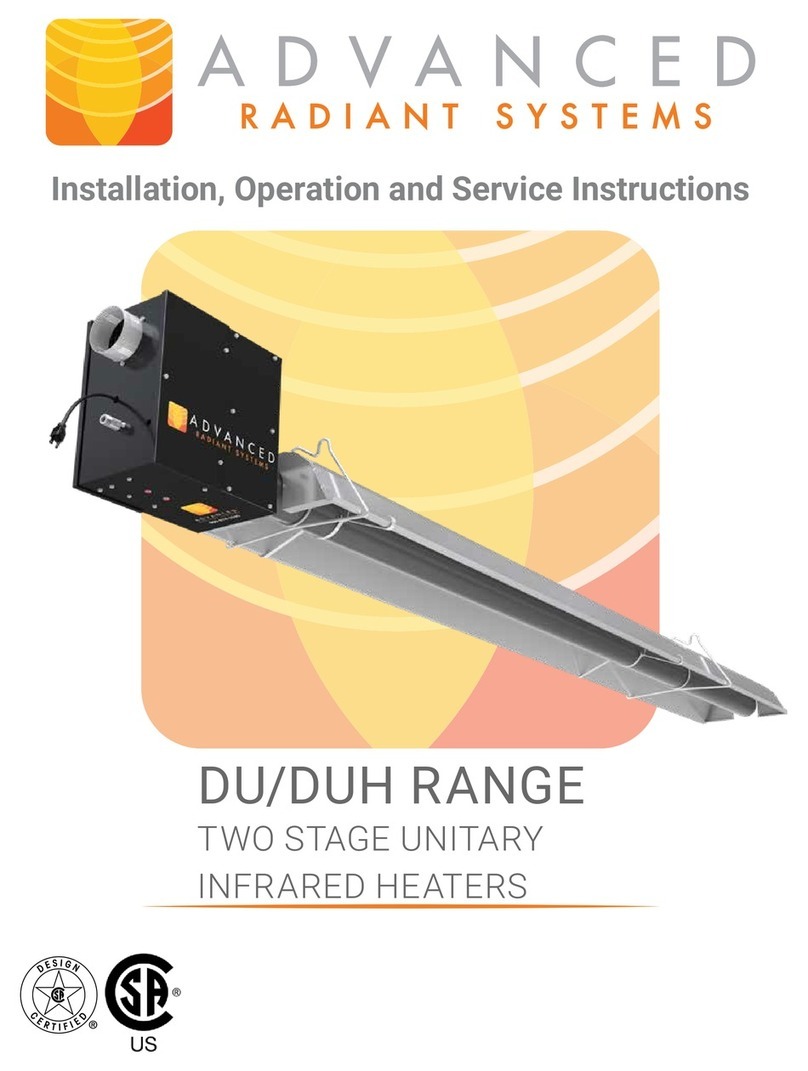
Advanced
Advanced DU-40 Installation, operation and service instructions
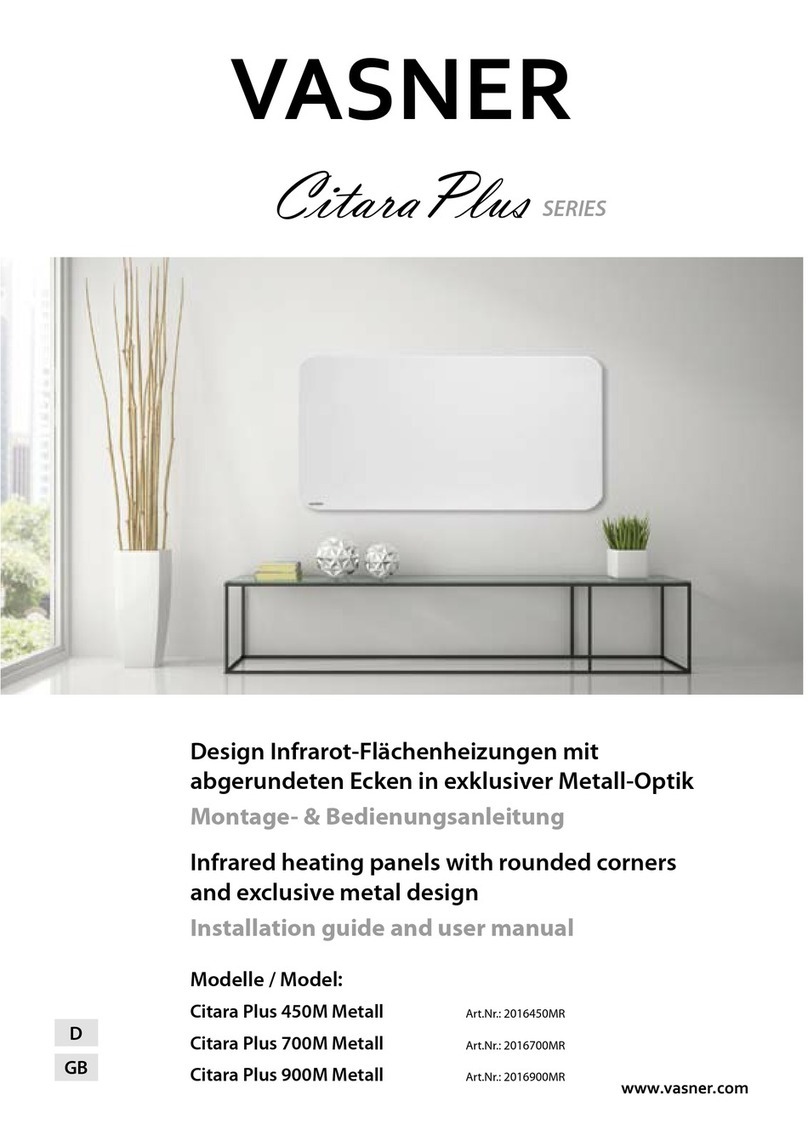
Vasner
Vasner Citara Plus SERIES Installation guide and user's manual

VONROC
VONROC EH515AC Original instructions

Webasto
Webasto Thermo 90 ST Service and repair manual

Cadet
Cadet Energy Plus CE163T owner's guide
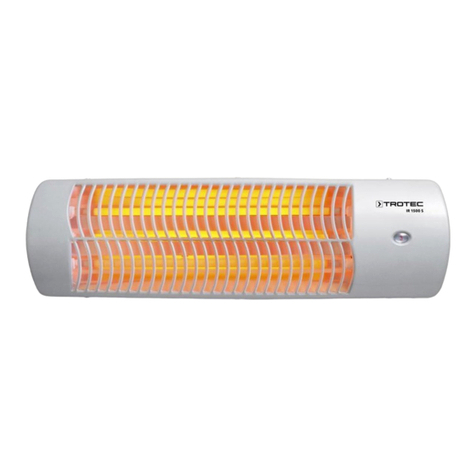
Trotec
Trotec IR 1500 S operating manual
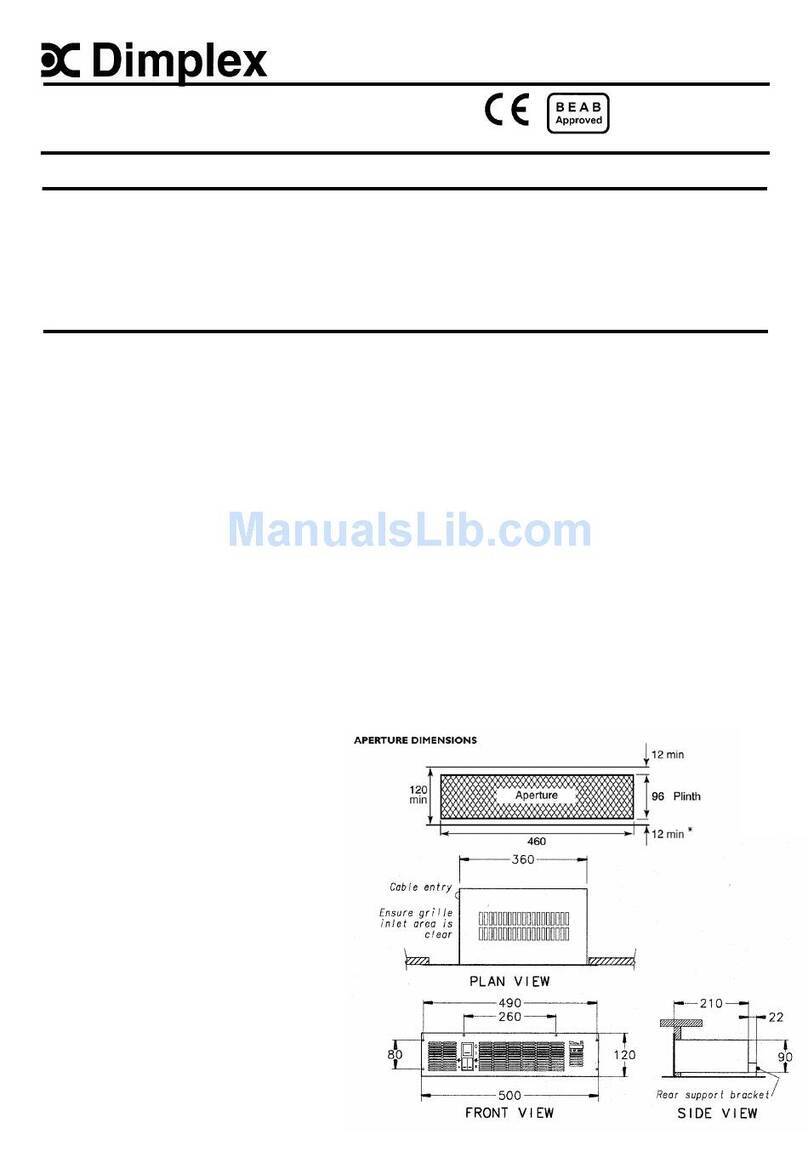
Dimplex
Dimplex BFH24T Installation and operating instructions
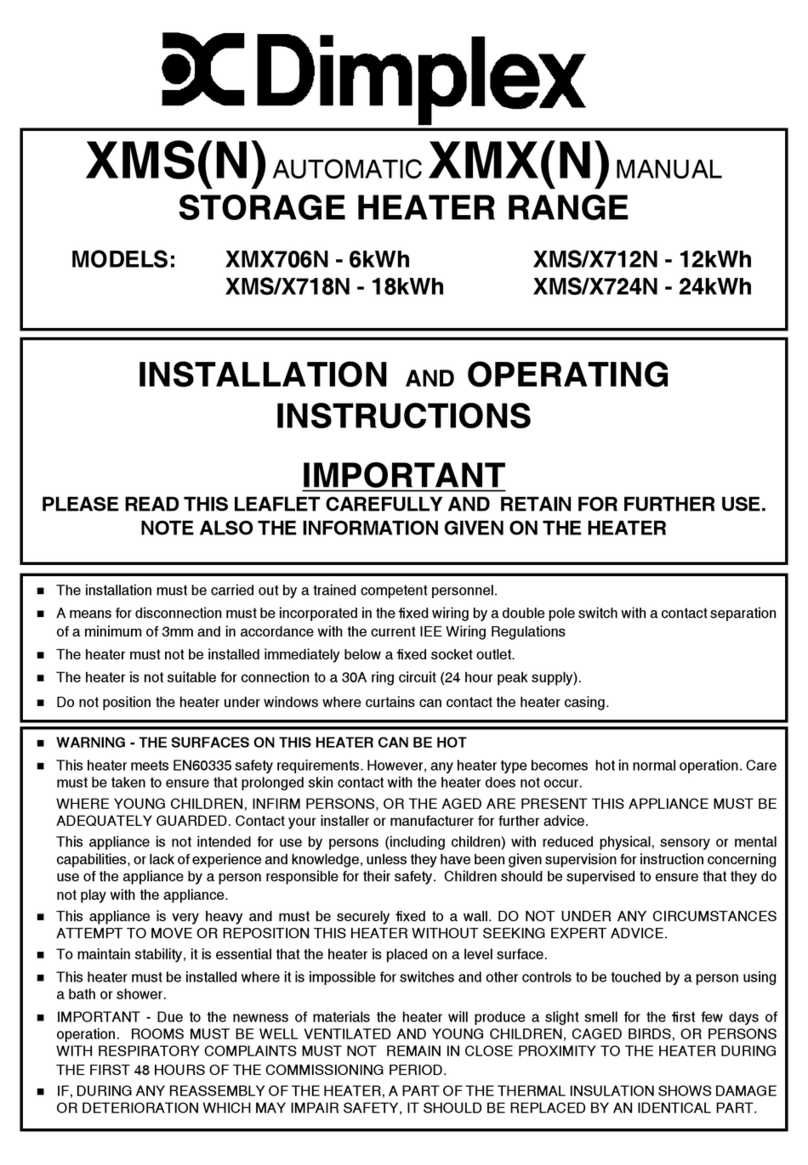
Dimplex
Dimplex XMX706N Installation and operating instructions
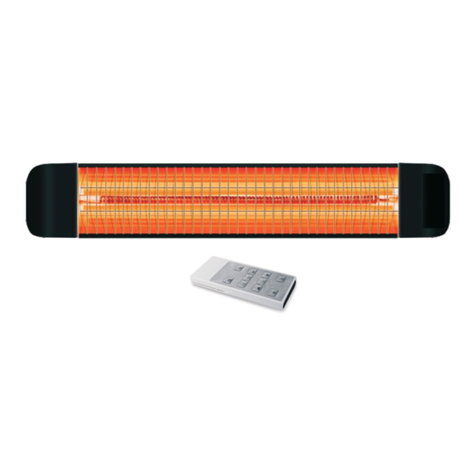
Mirrorstone
Mirrorstone MS-QHA-12J manual
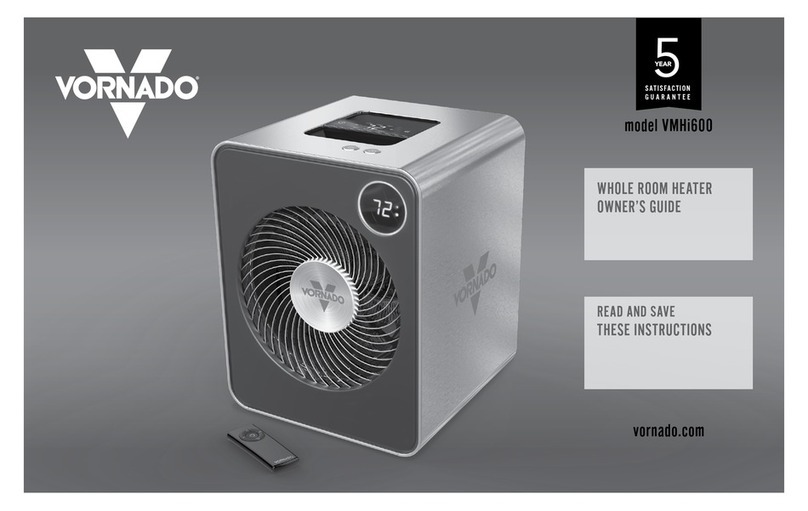
Vornado
Vornado VMHi600 owner's guide
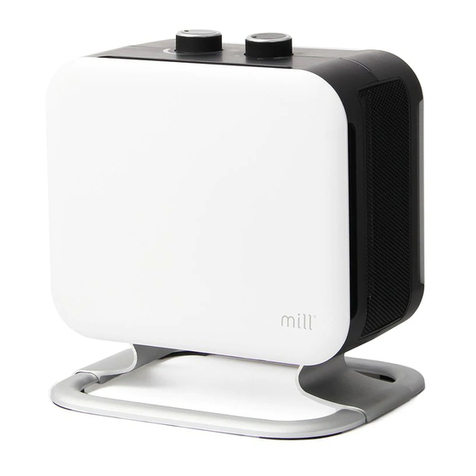
MILL
MILL PTC Series Assembly and instruction manual
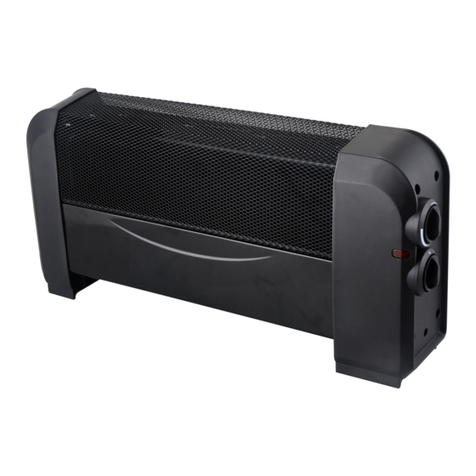
Optimus
Optimus H-3608-F Instruction manual and owner's guide
